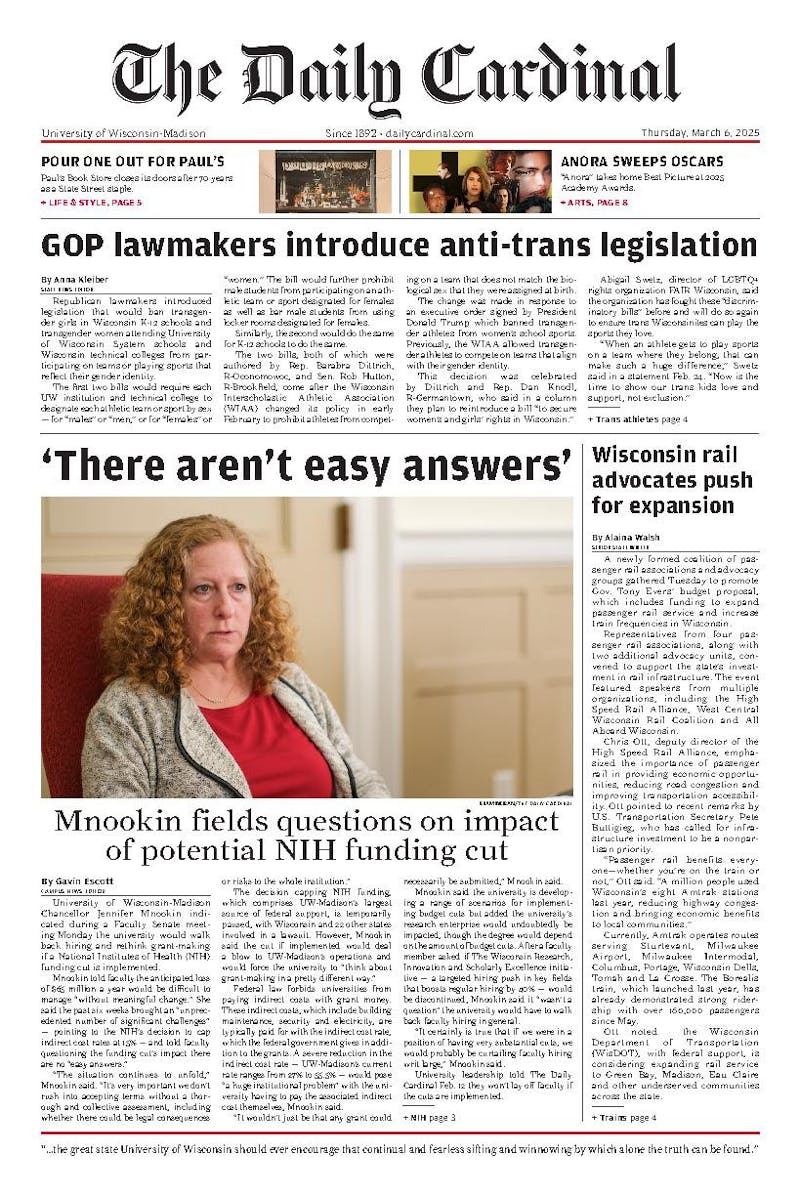If you’ve ever thrifted clothes, have you ever wondered where that piece of clothing came from?
Every object we see has its own story. Whether it’s the chair you used in the library or the current house you’re living in, there’s a hidden history to that object that it is incapable of telling on its own.
Located right on campus in the Ruth Davis Design Gallery in Nancy Nicholas Hall, “Questioning Things” urges its viewers to dig a little bit deeper into these stories and histories of “things.”
The exhibit was inspired by now retired founding Faculty Director of Material Culture Ann Smart Martin and was curated by Associate Professor in Design Studies and Executive Director of the Center for design and Material Culture Sarah Anne Carter with a vision to inspire curiosity in the world of objects.
With the curatorial assistance of UW Material Culture alumni, the exhibit houses around 76 objects with some dating all the way back to the 1800s. Visitors gain a true understanding of the importance of material culture from this vast collection of “things” sourced through collaboration with local, state and private collectors — with some being from the Chipstone Foundation and the Chazen Museum of Art.
“Material culture is the study of the material traces from the past,” Carter explained. “So, instead of understanding history from a book or a document, you can understand history from an 18th century waistcoat and all of the systems that went into creating it: where did the fabric and design come from, what kind of body wore this and even how much did this cost.”
As you walk through the exhibit, you’ll find different sections of objects housing groups of highly diverse objects that are seemingly alike. This was the vision Carter worked to create: how commonly used objects — like a chair — serve the same purpose, but can have infinite unique variations.
“We have a number of historic chairs that are reproductions. One of the chairs is a reproduction by John Hemmings who was enslaved by Thomas Jefferson in the early 19th century. If you lean back, it's sort of a round chair, and this was made for Jefferson, but was also for his arthritis because he had a lot of pain and that chair would make him more comfortable,” Carter noted.
The exhibit as a whole is deliberately presented to ensure these carefully selected items add up to an experience more than the sum of its parts. This is evident in how, upon entering, visitors are immediately provided a handbook. The handbook contains the map of “things” along with interactive activities you can complete as you walk through the exhibit.
“In the handbook, there’s a place where you can take notes, you can sketch, and it's inviting more interaction,” Carter said.
In addition to the handbook, the labels on each object came from different perspectives.
“Rather than have it be in my voice as the curator, we decided to have as many voices as possible,” Carter added. “Every object in this exhibit has a label that was written by someone who is connected to the material culture program.”
Interaction is one of the main factors of the exhibit. Some displays contained drawers visitors could pull out and look at, while others had interactive objects like — my favorite part — the chair park. The chair park contains nine chairs, where visitors can sit and read about the history of the chairs.
“We were interested in giving people different types of experiences,” said Carter. “As you move through the space, you can think about what kind of chair you might want to sit in, what words you think about when you're in the chair, how it feels or which chair you like. Just to start thinking differently and engaging with the space.”
Sitting behind the chair park is a wall of polaroid pictures. The polaroid cameras, which sit near the shelf, can be used to create a collage of images while encouraging visitors to question the influence polaroid cameras played in photography.
“The idea is that you come back, try a chair and take a picture with a friend or in a group. As it develops, you're sort of just waiting around. Again, it's another strategy to invite people to be present and experience the exhibit to look around in and not just rush through,” Carter explained.
The exhibit houses an amazing number of modern and historical everyday objects that are presented with a sense of fun, playful innocence you may not expect. “Questioning Things” will remain open in the Ruth Davis Design Gallery in Nancy Nicholas Hall until Nov. 20. I highly advise taking the time to look, and maybe even question some “things.”
Editor's Note: this article was amended at 2 p.m. on Friday, Nov. 4, 2022 to accurately reflect the title of Sarah Anne Carter, to change the assistance being credited to Material Science graduate students to being accurately credited to Material Science alumni, and to add for clarity in the conclusion that the exhibit is in the Ruth Davis Design Gallery at the Center for Design and Material Culture located in Nancy Nicholas Hall. It previously only stated the exhibit was in Nancy Nicholas Hall.






